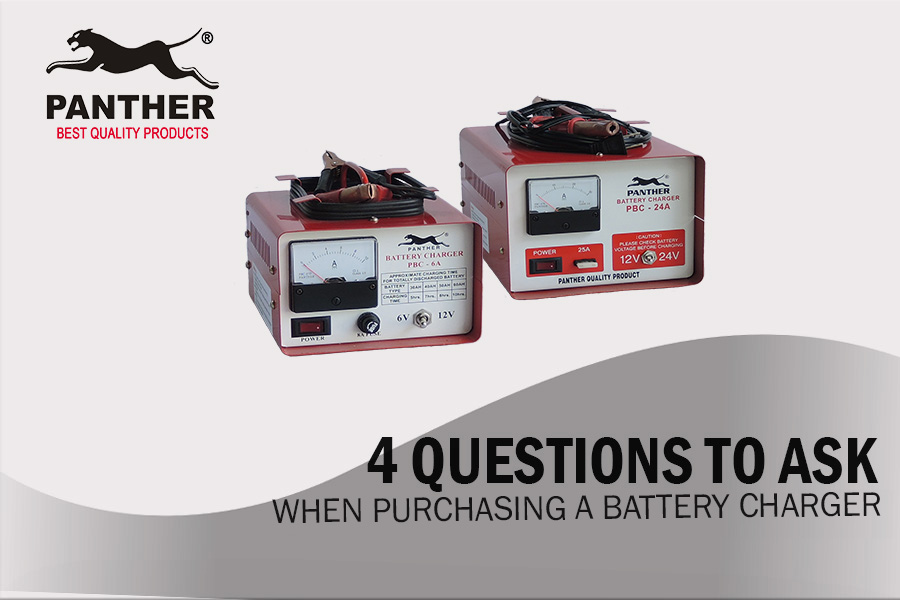
Table of Contents
Battery Chargers use power from the electricity socket to charge a rechargeable battery that has run low, also known as conventional charging. Charging a battery from empty to full can take several hours, depending on your battery size and condition, as well as the battery charger rating. Rechargeable batteries can come in the form of a car/motorcycle battery, emergency light battery, and others.
Example use cases:
- In the event of a car battery failure due to the driver forgetting to switch off the headlights, you can take out the battery from the car and use a battery charger to charge it up. Once charged, you can then place the battery back into your automobile
- The battery-powered equipment (e.g., forklift, generator) isn’t used often enough to keep the battery up to charge vis-à-vis the passive drain. As such, before using it, you take out the battery and hook it up to a battery charger first. This allows the battery to maintain the battery charge and prevent potential delays or frustration
Regardless of how you plan to use it, there are many factors that determine the type of battery charger you need. Choosing the right charger is extremely important to ensure not only are your requirements met, but also the charger you’ve purchased is not over specified resulting in a more costly solution than required. Below is a guide on what to consider when purchasing a battery charger
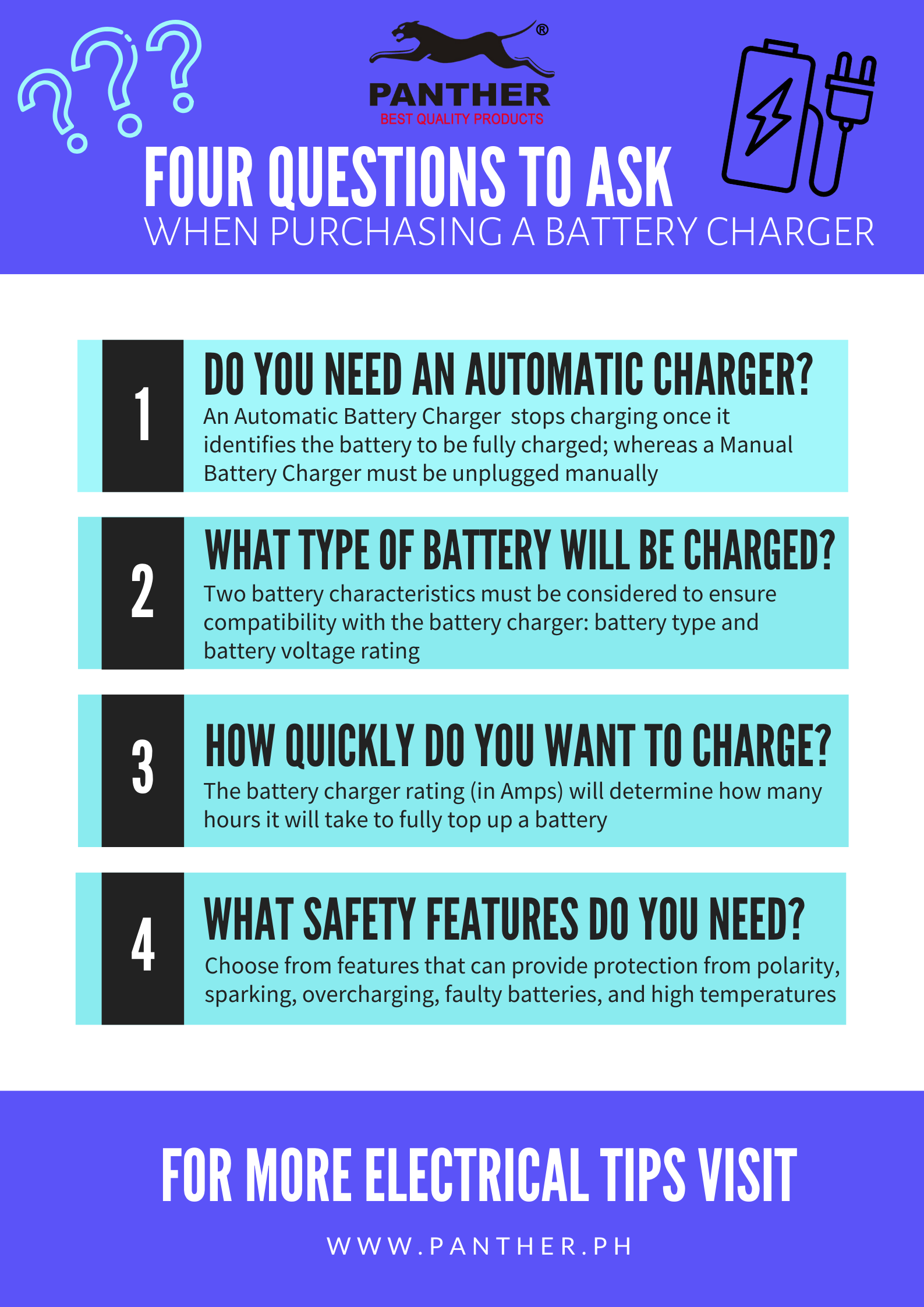
Question 1: Do you need an automatic or manual battery charger?
The big difference between the two is the ability to detect when the battery is fully charged and stop the charging to protect your battery from overcharging, which would ensure longer battery service life
- Automatic Battery Charger: Detects if the battery is already fully charged, and will automatically switch to float mode or maintenance mode to protect your battery from overcharging
- Manual Battery Charger: Requires user to monitor when the battery is expected to be fully charged, calculated based on battery size and condition as well as charger capacity and rating. Once fully charged, user must manually unplug the battery from the charger to prevent overcharging
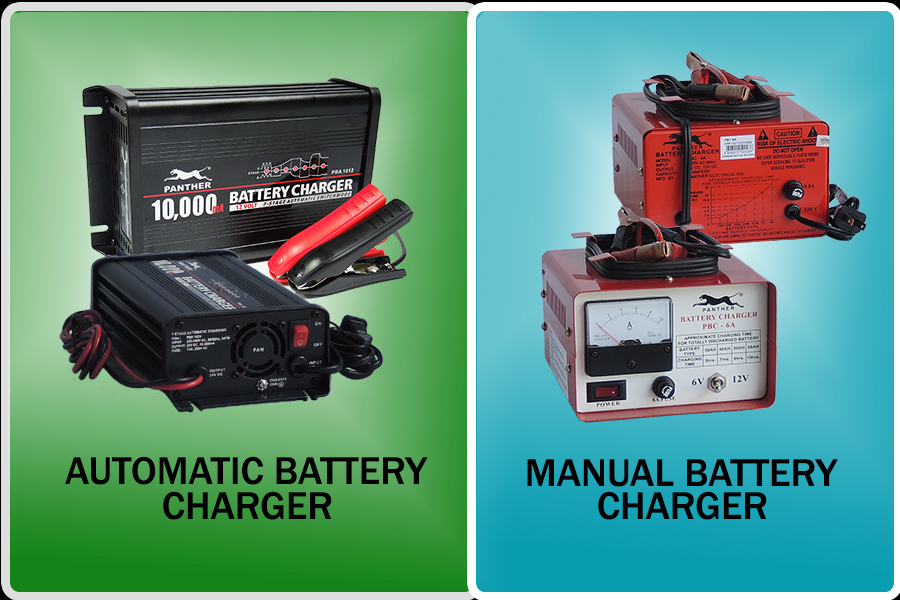
Question 2: What type of battery are you planning to charge?
There are two things to consider in terms of battery characteristics:
- Battery type: this ranges from wet cell (flooded), maintenance free, absorbed glass mat, to gel cell or calcium batteries. Note that most lead acid batteries work with all kinds of battery chargers, however you’d need to check if the battery charger is compatible with other battery types to be on the safe side
- Battery voltage rating: this can be either 6V DC or 12V DC. 24V DC occurs when two 12V DC batteries are placed in series and are used together. However, keep in mind that batteries used in series must be charged together as well, in order to ensure that the battery conditions remain the same
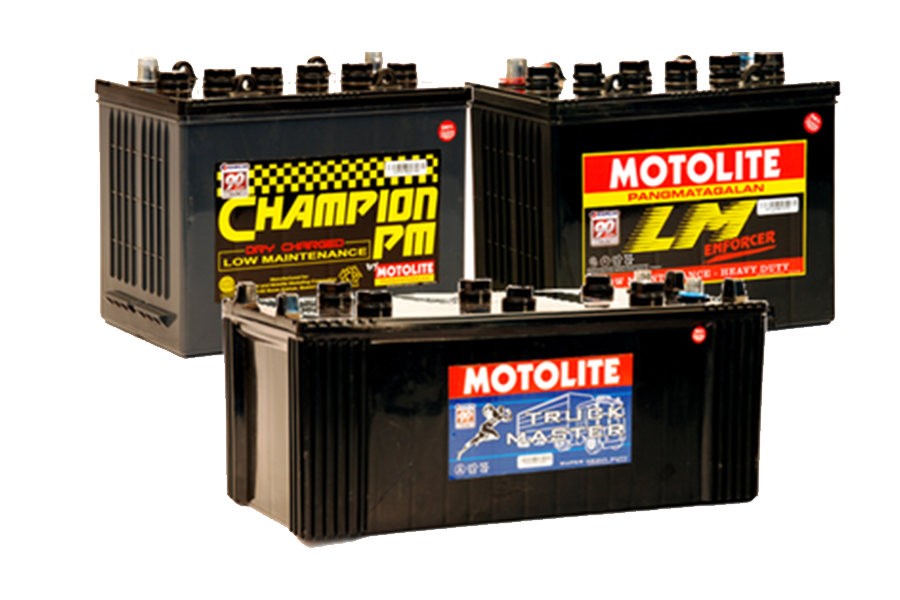
Question 3: How quickly do you want your battery charged?
For example: If your auto battery can last around 50 amp hours, and you choose a 12 amp charger, it would take ~4 hours for it to recharge if the battery were completely dead. The formula we use here is:

Based on your calculation, you may determine that you need a battery charger with a higher amp rating. However, if you’re not in any hurry, you can select a smaller charger. The important thing is to make sure you have enough charger power to top up your battery within the allocated time
To make it easy for you, you can use our handy Panther Battery Charger chart below to determine the charging time needed given your battery type and which Panther Battery Charger you purchase given varying charger ratings

Question 4: What safety features do you require?
Keep in mind that the more safety features are included, the more expensive the battery charger
- Reverse Polarity Warning: This alerts the user if the wrong cable is hooked up to an incompatible post, hence preventing dangerous sparking
- Spark Proof Clamps: If you accidentally turn on the battery charger before clamping it to the battery, sparking could occur. To eliminate this risk, you can use spark proof clamps
- Clamp Amps: Clamps are used to connect the posts and have an equivalent amp rating. As such, the advisable rating is usually 25 amps or more, depending on the battery charger size.
- Multi-step charging: Certain automatic battery chargers charge in multiple steps. Depending on the battery condition, the battery charger will then be able to adjust the charging process accordingly resulting in greater control and flexibility. These steps could include:
- Maintenance and float mode: This detects if the battery is fully charged, and maintains the charge at 100% without overcharging or damaging the battery. Without this, leaving the battery charger plugged in could lead to overheating, battery damage, or explosion
- Battery Test: Checks if the charge was successful. If unsuccessful, it will then switch to Recondition mode or alert the user that the battery is faulty. Potential cause of issue could be due to sulfate that have built up on the plates over time, which will reduce the battery’s ability to accept a full charge
- Recondition mode: This introduces a low constant current to the battery for a period of time, which can recover batteries from a deeply discharged state
- Cooling fan: Automatic temperature control reduces internal component temperature which translates into higher reliability and smaller physical size for the charger.
Here at Panther, our goal is to provide innovative products that will best suit your needs. In line with this, please find below the selection of available models under the Panther Battery Chargers Product Series
Note: All Battery Charger have an Input Voltage of 220V AC, and come with one pair of battery clip (positive and negative)
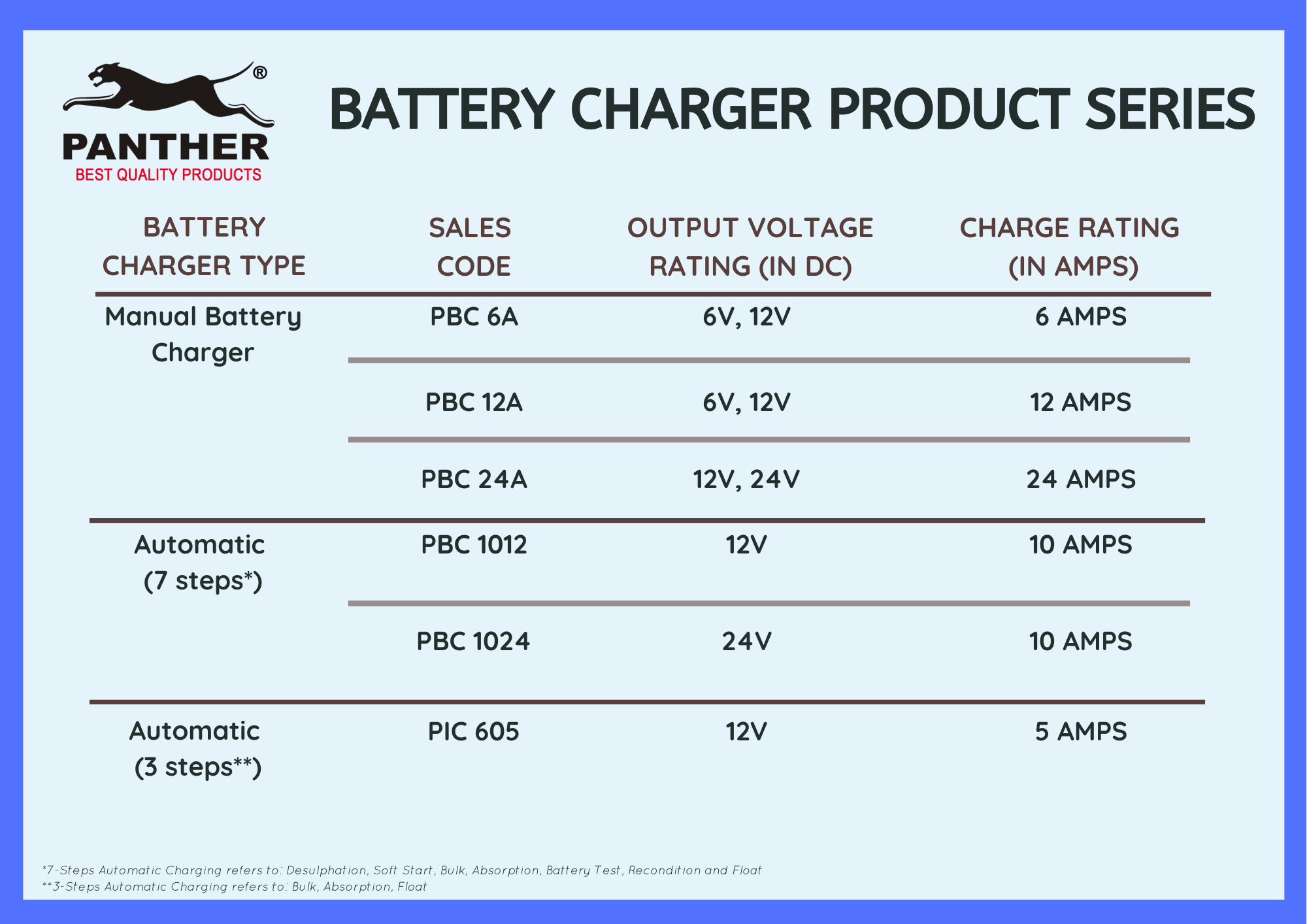
*7-Steps Automatic Charging refers to: Desulphation, Soft Start, Bulk, Absorption, Battery Test, Recondition and Float
**3-Steps Automatic Charging refers to: Bulk, Absorption, Float
CAUTION:
- Do not use the battery charger to charge a dead or shorted battery. This will only damage the battery charger
- Do not use a 24V Battery Charger to charge two 12V batteries UNLESS these batteries are always used in series together and therefore are in the exact same battery conditions. If you do not follow this rule, charging one battery that’s damaged with another battery in good condition could cause damage to the “good” battery
- Certain batteries are able to accept very large charging currents (e.g., fast charge). However, for most batteries, fast charging could reduce battery life and capacity. When in doubt, do check your battery specifications to ensure you are not applying current in excess of the recommended amount

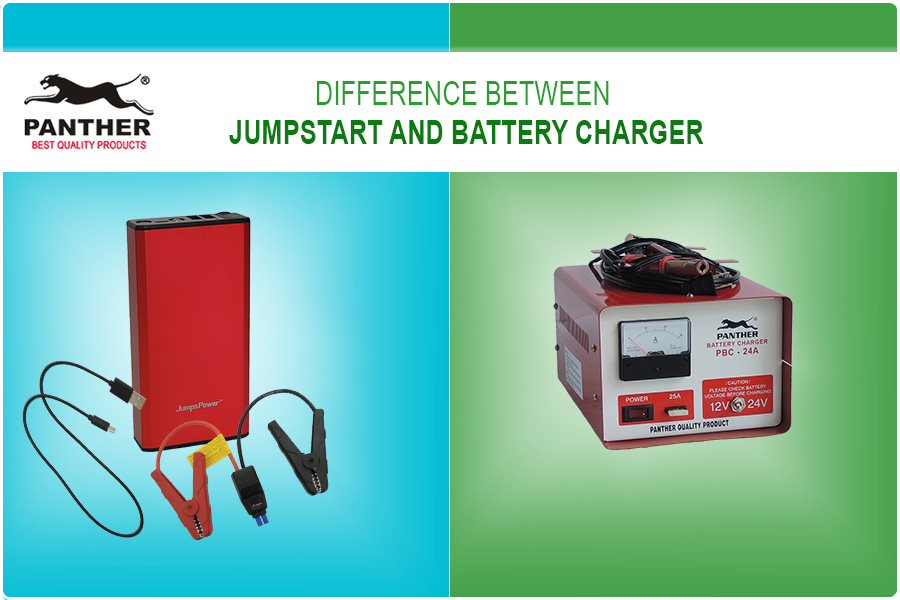
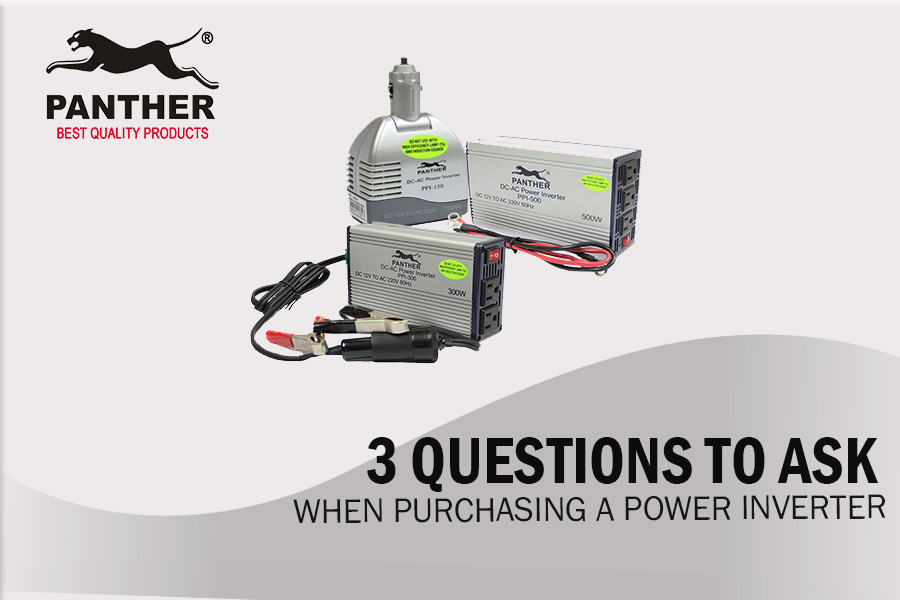

How much battery charger 15amphers or 20 ampheres 12volts i use to charge truck battery
Good day! We would recommend the PBC 24A for your truck: https://panther.ph/product/pbc-24a-battery-charger/
Please check and make sure the ampere and volts are compatible. Thank you!